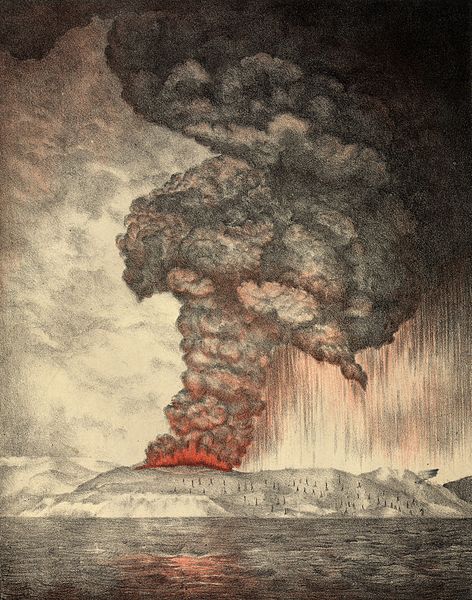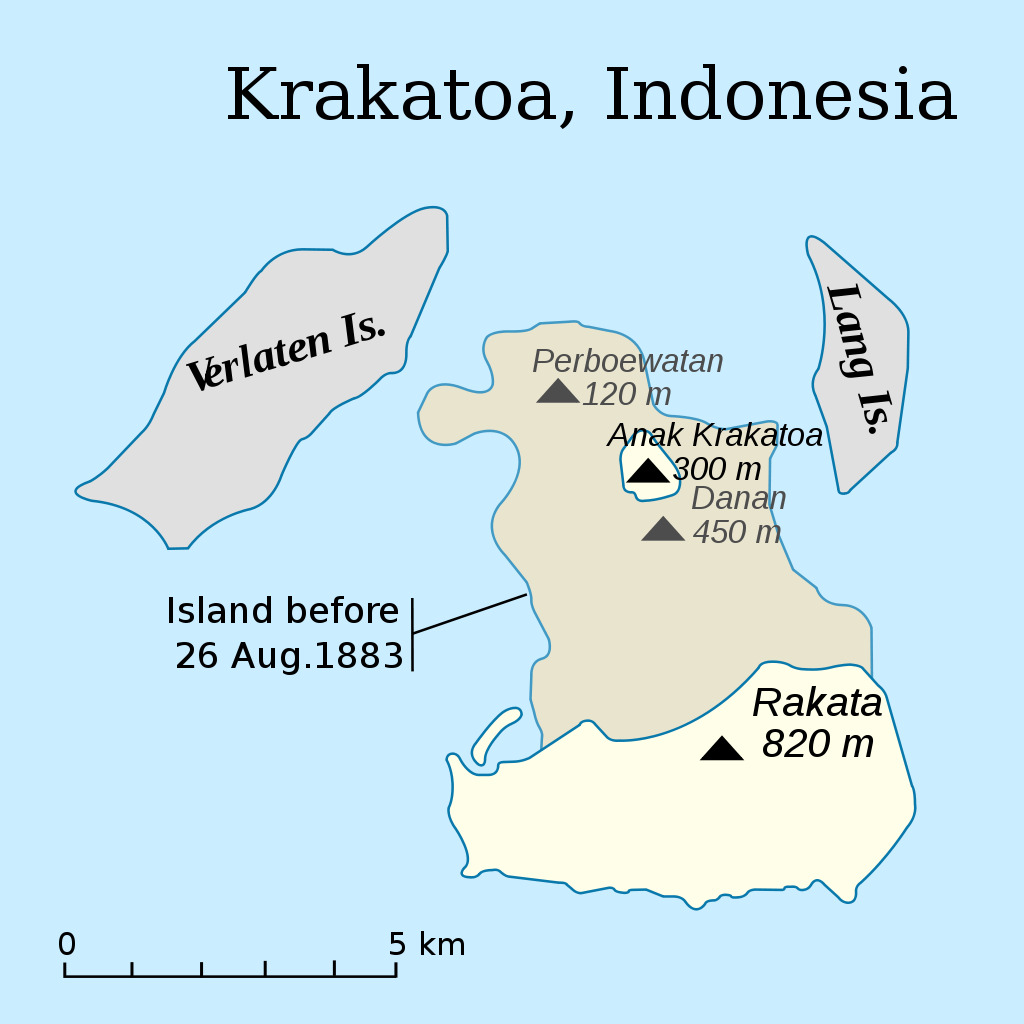
Image published as Plate 1 in The eruption of Krakatoa, and subsequent phenomena. Report of the Krakatoa Committee of the Royal Society (London, Trubner & Co., 1888).
Public Domain via Wikimedia Commons
On 20 May 1883, Krakatau (Krakatoa)–a small volcanic island west of Sumatra in Indonesia–came alive with an eruption noticed by a passing German warship. Other eruptions would be noticed by commercial liners and those living on nearby islands for the next two months. Then on 26 Aug an enormous blast took place that destroyed nearly two-thirds of the island. Pyroclastic flows and huge tsunamis would sweep over nearby islands and coastlines. But the worst came the following morning, 27 Aug, at 05:30 am. Four eruptions would took place with the resulting sound heard over 3,000 miles away. Ash was propelled fifty miles into the air and would circulate around the globe creating colorful sunsets but also lowering temperatures worldwide by several degrees.
36,000 deaths resulted from the eruption and 31,000 were from the tsunamis created when much of the island fell into the water. The highest waves were 120 feet high when they washed over neighboring islands stripping them of people and vegetation. Pyroclastic flows that stretched as far as 40 miles claimed about 4,500.

Image by ChrisDHDR via Wikimedia Commons
Public Domain
The Krakatau eruption of 1883 is considered one of the most violent volcanic activities in modern times and even recorded history. However volcanic activity continues in that area. In 1927, a submarine lava dome was detected in the area that had been destroyed by the eruption in 1883. A new island volcano began to emerge spewing ash. Other islands also started appearing as well but eroded away by the sea. Ultimately a fourth one appeared in August 1930 and was able to last. It was named Anak Krakatau and continues to grow taller each year. It is an active volcano and seemed similar to Stromboli in its eruptions. However more recent eruptions have resulted in volcanologists to warning people to keep a safe distance away. And more ominous is that a large lava dome is growing in its crater. Signs point to one day a very explosive event occurring at this volcano.
Sources:
Bagley, M. (2017, September 15). Krakatoa volcano: Facts about 1883 eruption. livescience.com. https://www.livescience.com/28186-krakatoa.html
Krakatoa – Eruption, Causes & Impact. (2023, May 2). HISTORY. https://www.history.com/topics/natural-disasters-and-environment/krakatoa
On This Day: Historic Krakatau Eruption of 1883. (2024, March 25). National Centers for Environmental Information (NCEI). https://www.ncei.noaa.gov/news/day-historic-krakatau-eruption-1883
Suggested Reading
Editors, C. R. (2014). The 1883 eruption of Krakatoa: The History of the World’s Most Notorious Volcanic Explosions. CreateSpace
Winchester, S. (2005). Krakatoa: The Day the World Exploded: August 27, 1883. Harper Collins.
Titanic News Channel is a participant in the Amazon Services LLC Associates Program, an affiliate advertising program designed to provide a means for sites to earn advertising fees by advertising and linking to Amazon.com.














